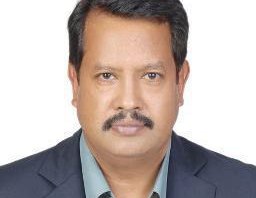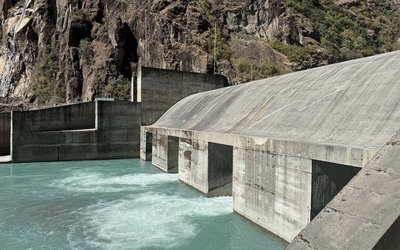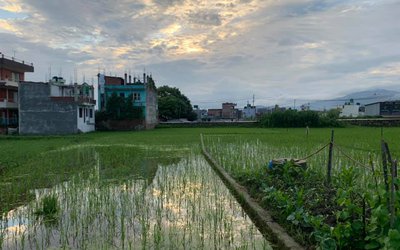
At a time when the need of a dynamic administrative leadership is felt to bring drinking water from the Melamchi river to Kathmandu, the Ministry of Urban Development has Arjun Kumar Karki, known for his dynamism, as a secretary at its helm.
As Kathmanduites are waiting for the water from Melamchi river to quench their thirst, Karki as the Ministry’s administrative head is expected to make a lot of difference. Showing a spirit of sportsmanship, secretary Karki has always met the targets of his work.
In his recent appearance in the Development Committee of Legislature Parliament, secretary Karki made it clear that the project will be completed as per the schedule. Following the meeting, secretary Karki directed the chief of Melamchi Project and contractors to complete the project in time.
After his direction, the speed of construction of Melamchi Tunnel has accelerated. Replying to the queries of the committee members, secretary Karki assured them that he would take the necessary steps to accelerate the construction of the tunnel.
With the near completion of Upper Tamakoshi Project, there is a rush of people to get the credit for it. However, only a few people know that the current secretary at the Urban Development Ministry, Arjun Kumar Karki, had taken a decision on the project.
While serving as the managing director of Nepal Electricity Authority between 2006-2008, Karki took so many decisions to transform the NEA. Upper Tamakosi is one of the biggest projects with a typical version of Public-Private and Community Participation.
Nobody imagined, including prime minister late Girija Prasad Koirala that Nepalese could construct 456 MW, the largest hydropower project, by the Nepalese money. However, Karki’s determination to build Upper Tamakoshi Project in a typical Nepalese modality, with Nepal Electricity Authority's 41 percent, Citizen Investment Fund's 2 percent, Nepal Life Insurance Company's 2 percent and Nepal Telecom's 6 percent. There is also some 17.28 percent shares to the depositors of the Employment Provident Fund, employees of NEA and employees of concerned investment companies.
Many in Nepal Electricity Authority still term Upper Tamakoshi as a brainchild of Karki. Had he not insisted and took a stand, the cheapest hydropower project of Nepal would have been handed over as a foreign joint venture.
With vision and commitment for the country’s development, Karki is never hesitant to take a decision. His decisions have virtually revived Nepal Electricity Authority again.
As a resident of Dolakha district, Karki opened the district as a major player in hydro-energy sector. Along with carrying out the new concept, Karki also negotiated with many other projects for NEA.
After taking such a major decision, Karki spent almost all three years in an unknown ministry. Whether it is a coincidence or just a casual transfer, Karki again returned to NEA for a short tenure as a managing director when NEA was without any large hydropower projects.
Immediately after taking the position of Managing Director, Karki opened a file of 335 MW Capacity Upper Arun and 400 MW capacity Lower Arun Project and secured the license from Department of Electricity Development, which was holding it earlier.
Recently the government has negotiated with the World Bank for the proposed project. NEA will have another major project in its hands. This is also a gift of Karki to NEA. According to a recent report, NEA has proposed a similar model like that of Upper Tamakoshi for the construction of 335-Megawatt-capacity Upper Arun Project.
Wherever secretary Karki has gone, he has made certain moves without hesitating to take a decision. When he was posted as the acting secretary and Chief of Western Regional Office, his first task was to break the syndicate system in Beni-Jomsom motor road. Since its inception five years ago, the vehicle movement of the road was under the control of two syndicates, creating difficulties to the passengers travelling to Muktinath. Now, one does not need to wait for a syndicate.
- MELAMCHI WATER SUPPLY: No Interruption During Monsoon
- Jun 25, 2025
- KOREAN RETURNEES: Successful Integration
- Jun 25, 2025
- UPPER TRISHULI-1: Engaging With Local
- Jun 25, 2025
- IME GROUP: Twenty Five Years Of Journey
- Jun 24, 2025
- NEPAL’S AIR POLLUTION: A Growing Health Concern
- Jun 24, 2025















